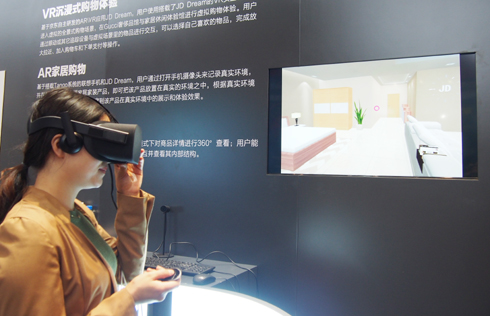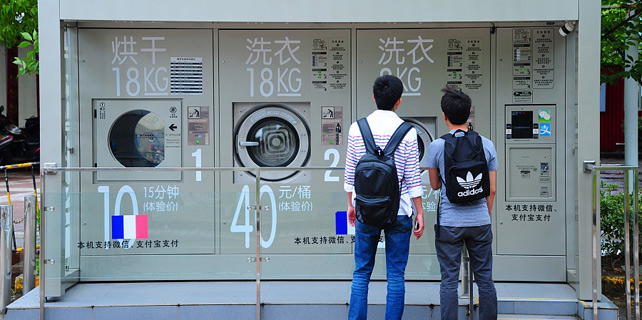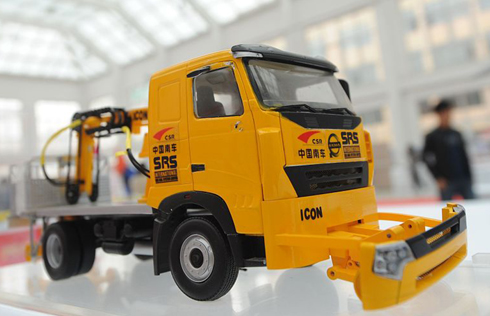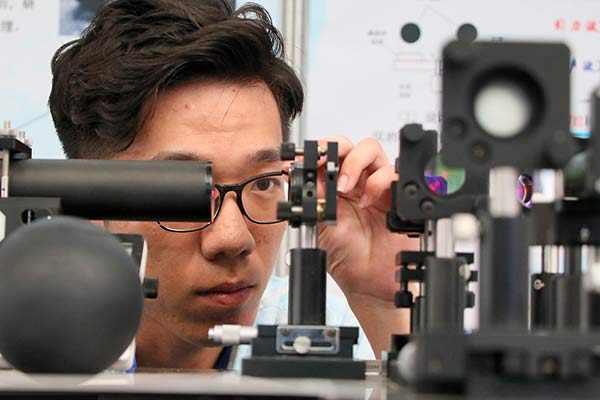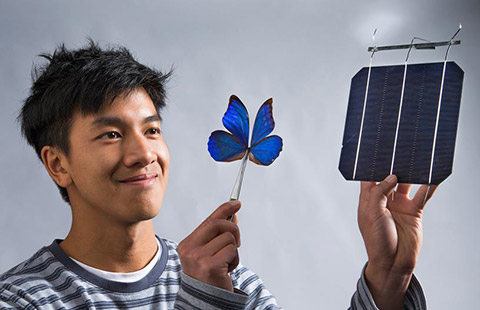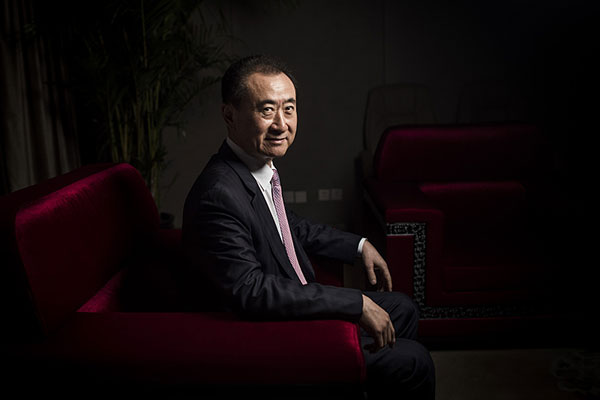Chinese thrilled by VR at science exhibition
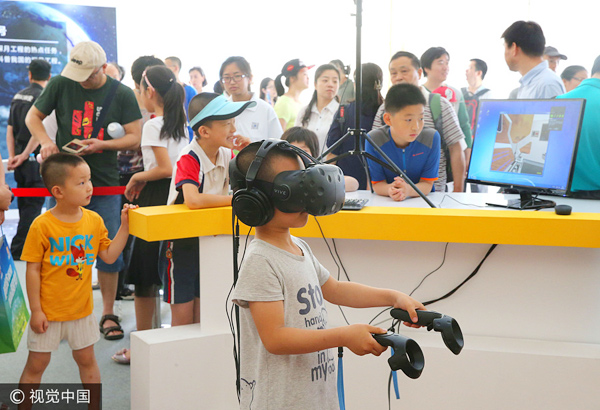 |
|
A child tries out a VR gadget at a science exhibition in the Cultural Palace of Nationalities in Beijing, May 21, 2017. [Photo/VCG] |
BEIJING - Whether it's soaring above Mars or diving below the Pacific, science fans now have a host of scientific immersive experiences they can explore through virtual reality (VR).
At a science exhibition in the Cultural Palace of Nationalities in Beijing, people queue up at a VR experience zone where they can "dive" to 2,000 meters and "collect" coral.
It is based on the sea expedition conducted by China's research vessel Kexue ("Science") in 2015. People are instantly taken to the departure port once they put on the headset, when they can hop on the vessel and begin their adventure.
"I was so scared at first, it was very dark under the sea and I was stuck in the middle of rocks," said nine-year-old Ren Haoming. "But I managed to finally pick up a huge crab."
Kexue has launched sea expeditions at the Yap Seamount sea area in the west Pacific, where scientists have collected sea animal and rock samples.
"Science and nature are my favorite classes at school. It is so cool to have such an experience," Ren said. "I can't wait to board a real vessel when I grow up."
As one of the activities held across China to mark the 2017 National Science and Technology Week, the exhibition looks at various scientific achievements from pedal-powered nanogenerators and driverless cars to unmanned helicopters.
Another highlight of the exhibition enables visitors to "roam on Mars" through VR.
"People always have many questions after experiencing it, such as about the geographical features on Mars or whether there will be strong storm on it," said Deng Chao who works for the exhibition.
The launch of China's first cargo spacecraft Tianzhou-1 last month inspired people's interest in science, and their enthusiasm was further fueled by the dive of Chinese submersible Jiaolong on Tuesday.
Jiaolong reached a depth of 4,811 meters in the Mariana Trench, the world's deepest water, where scientists worked for more than three hours observing and collecting rocks and marine life samples.
A robotic arm at the exhibition provides people with a similar experience to scientists on the Jiaolong, enabling people to try to grasp simulated rock samples.
The science exhibition has also attracted professionals. Invited by China Science and Technology Exchange Center, Ulrichova Jitka, vice president of Palacky University, Olomouc, Czech Republic, came to China earlier this week.
After visiting the 2017 Shanghai Science Festival, one of the activities held across China this week, Jitka and two of her colleagues were also fascinated with the exhibition in Beijing.
"I haven't tried VR yet, and I'm very interested in the 3D-printed vertebrae," Jitka said. "This exhibition has more high-tech elements, whereas the science festival in Shanghai had more interactive activities."
"We are glad to provide people with more interesting experiences than just watching space and ocean exploration on TV," Deng said. "We hope to increase public knowledge in science through exhibitions and other scientific activities."




